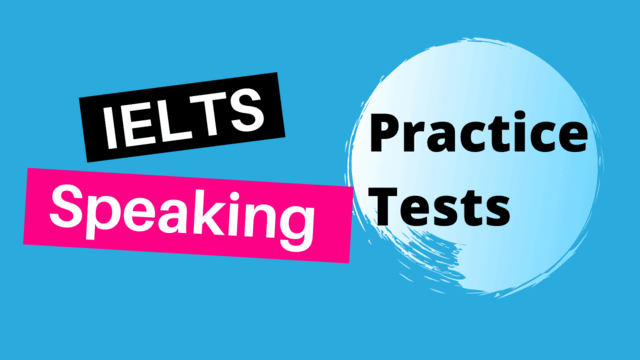The IELTS Speaking test is an important section of the IELTS exam, where your communication skills are assessed across three parts: Part 1 (Introduction and Interview), Part 2 (Long Turn), and Part 3 (Discussion). Transportation is a popular topic that examines your opinions, experiences, and thoughts on travel, commuting, and urban mobility. Below is a sample test on Transportation, complete with questions and answers, as well as essential tips to help you score high in the IELTS Speaking test.

Part 1: Introduction and Interview
- Question: What mode of transportation do you use most often?
- Answer: I mostly use public transportation, particularly buses and trains, as it’s convenient and affordable. I also like that it reduces my carbon footprint compared to driving a personal car.
- Question: Do you enjoy traveling by public transportation?
- Answer: Yes, I enjoy public transportation most of the time. It allows me to relax or catch up on reading. However, during rush hours, it can be crowded and a bit uncomfortable.
- Question: How do people in your city usually commute to work or school?
- Answer: In my city, most people rely on buses and metro trains for their daily commute. Some people prefer to drive, but public transport is often faster due to heavy traffic.
- Question: Has the Internet affected the way people use transportation?
- Answer: Definitely. The Internet has made it easier to plan trips, book tickets, and use ride-sharing apps. Many people now use their smartphones to check schedules and routes, which has made transportation more efficient.
Part 2: Long Turn
- Question: Describe a memorable trip you took using public transportation. You should say:
- where you were going
- who you were with
- what happened during the trip
- and explain why it was memorable.
- Answer: A memorable trip for me was when I took a train to the countryside with a group of friends. We were excited to explore the scenic areas outside the city. The trip was relaxing, and the views of the mountains and fields were breathtaking. What made it special was that we got to meet locals who shared stories about their culture. It was both fun and educational, and it made me appreciate the convenience of train travel.
Part 3: Discussion
- Question: What are the advantages and disadvantages of using public transportation?
- Answer: Public transportation is affordable and eco-friendly, reducing pollution and traffic congestion. However, it can be less comfortable than private transport, especially during peak hours, and schedules may not always be reliable.
- Question: How do you think transportation will change in the future?
- Answer: I think we’ll see more electric and autonomous vehicles on the roads, which will make transportation cleaner and safer. Public transportation may also become more efficient with the help of technology, such as real-time tracking and flexible routing.
- Question: Do you think governments should invest more in public transportation?
- Answer: Yes, governments should invest more in public transportation to make it safer, faster, and more accessible. Better public transport systems can reduce traffic congestion, lower emissions, and improve people’s quality of life by saving them time and money.
- Question: How can people be encouraged to use public transportation instead of personal cars?
- Answer: Governments could reduce ticket prices, improve the cleanliness and frequency of public transport, and create dedicated bus lanes. Incentives like these make public transportation a more attractive option than driving.
- Question: What impact do you think electric vehicles will have on urban transportation?
- Answer: Electric vehicles will reduce air pollution in cities and make urban areas quieter. They also align with environmental goals by reducing carbon emissions, and as charging infrastructure improves, I believe more people will switch to electric vehicles.
Tips for Scoring High in IELTS Speaking
- Work on Pronunciation and Intonation
Clear pronunciation and natural intonation enhance your fluency. Practice speaking at a steady pace, emphasizing key words, and using intonation to convey enthusiasm or emphasis in your answers. - Expand Your Vocabulary
For a topic like transportation, include specific vocabulary such as “commute,” “ride-sharing,” “carbon footprint,” “autonomous vehicles,” and “congestion.” This will show examiners you have a broad range of vocabulary. - Organize Your Responses Clearly
Organize your answers with a clear structure: introduce your main idea, expand with examples, and conclude if needed. This helps the examiner follow your thoughts easily and shows logical flow. - Use Complex Grammar and Sentence Structures
Try to use a mix of simple and complex sentences, like conditionals (“If public transport were more reliable, more people would use it”) and passive voice (“Electric cars are being introduced globally”). This demonstrates your grammar skills effectively. - Stay Calm and Keep Talking
If you’re unsure of an answer, take a deep breath and provide a related opinion or talk around the topic. Practicing transportation topics can help you maintain fluency and confidence, even on challenging questions.
By applying these tips and practicing with the sample questions, you’ll strengthen your speaking abilities, vocabulary, and overall confidence. This preparation is key to achieving a high score in the IELTS Speaking test. Good luck!
